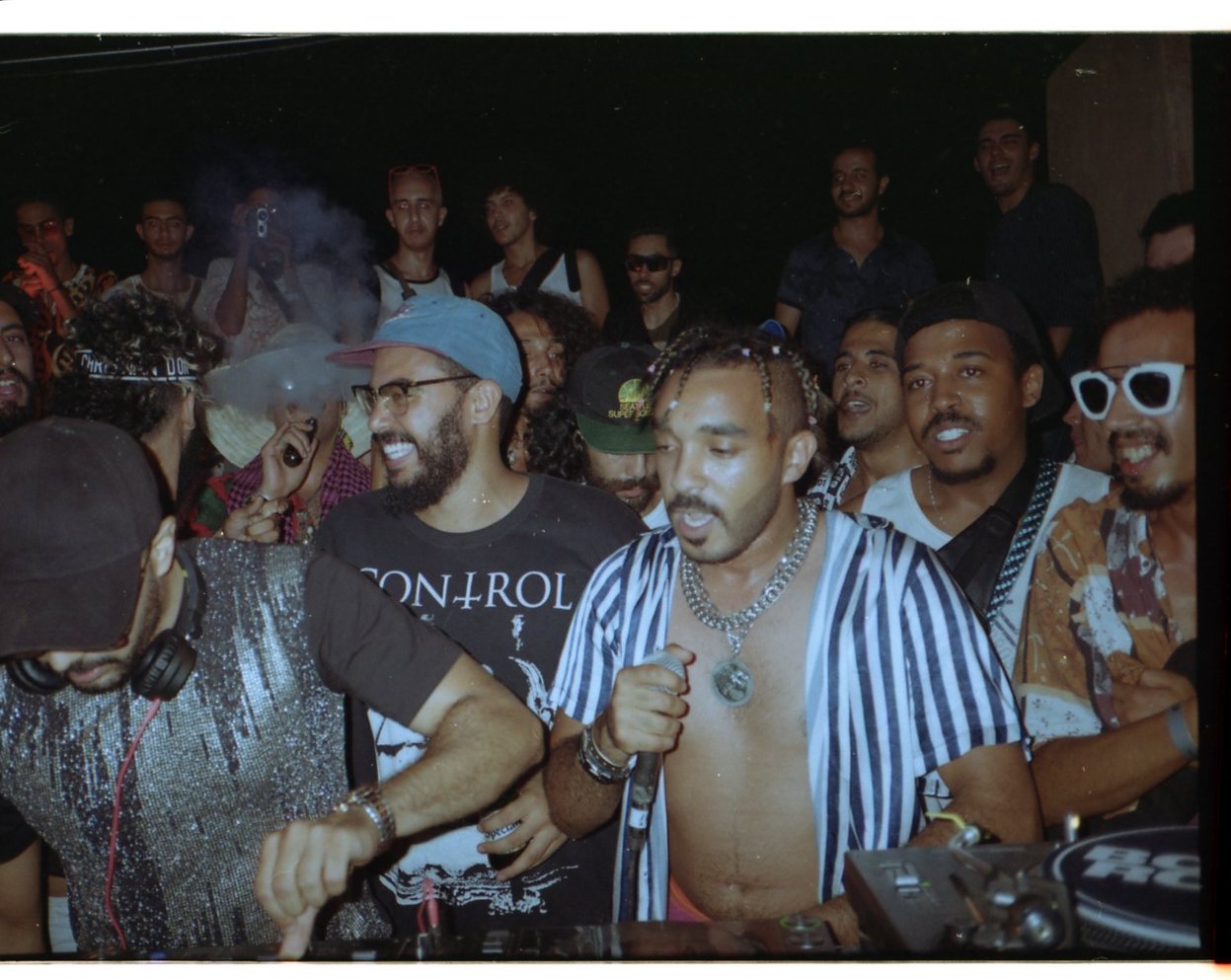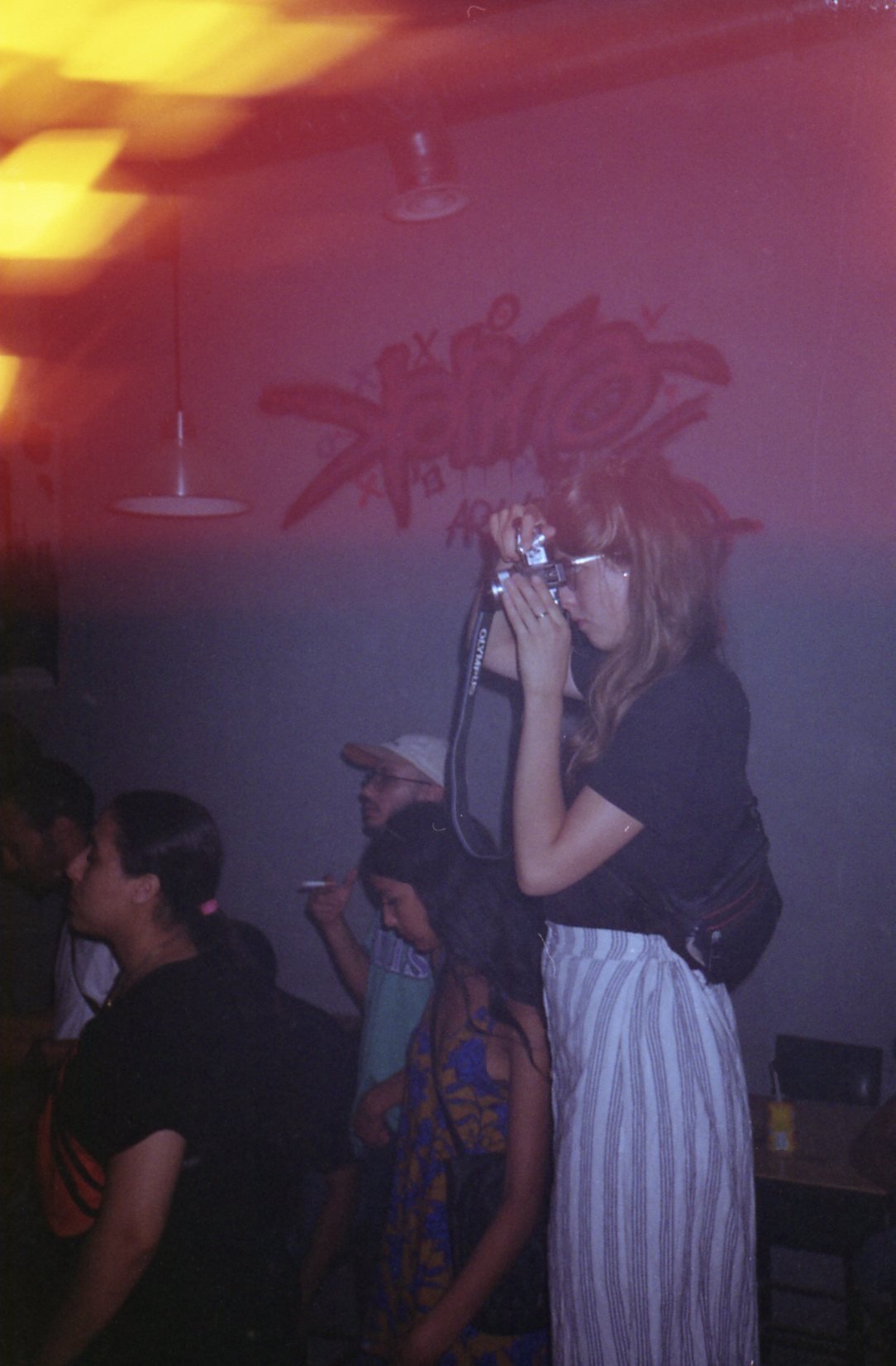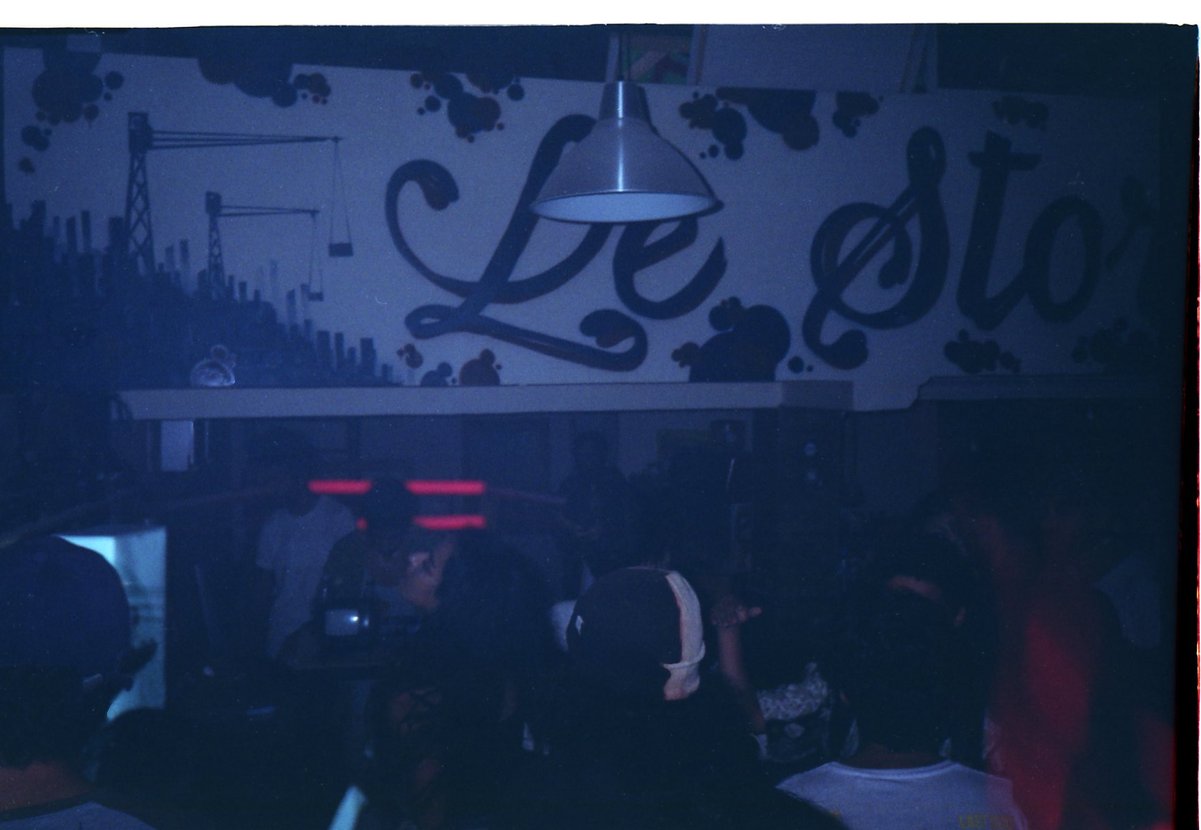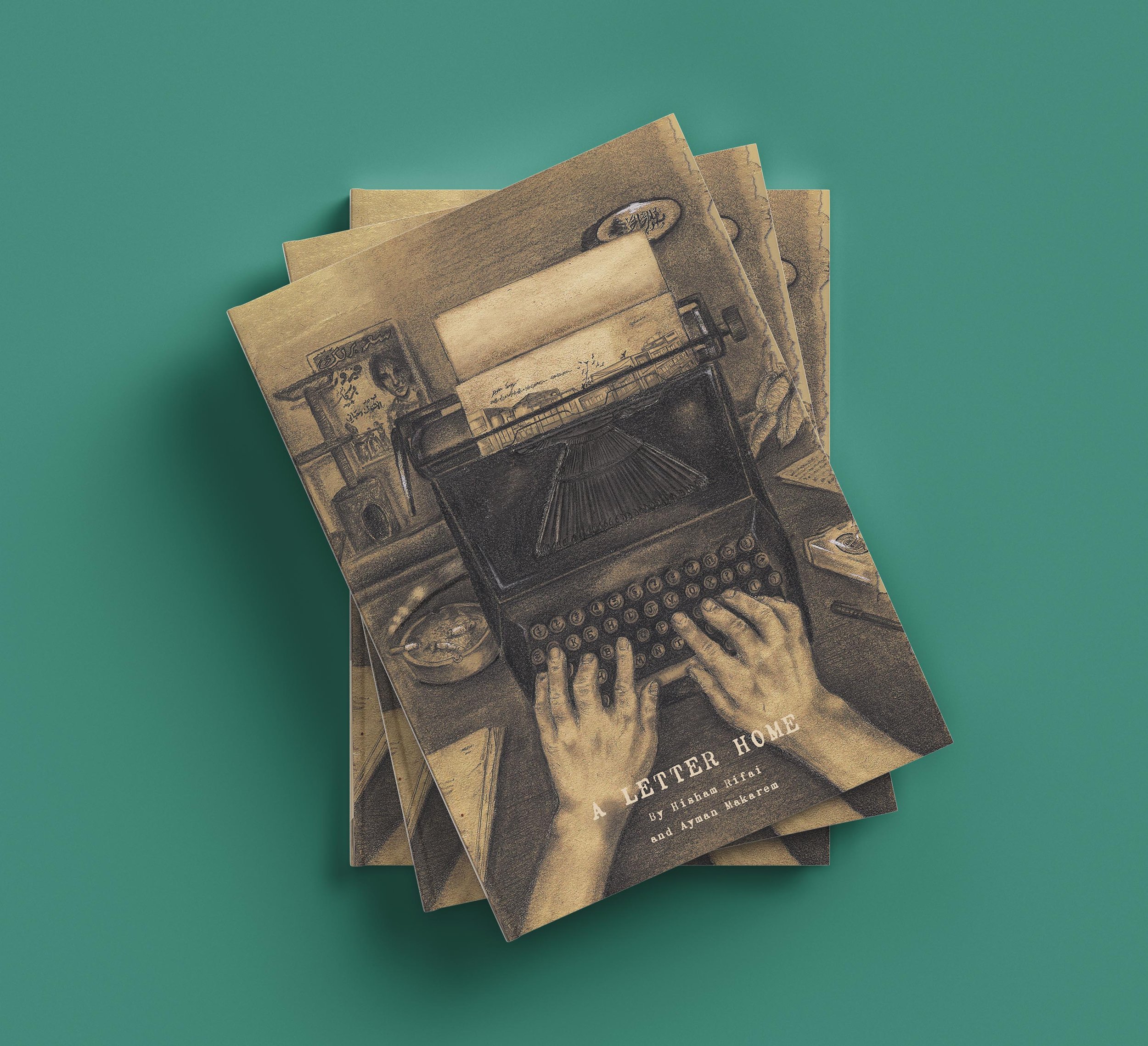Wave upon Wave: Revivals of Morocco's Indie Arts Scene
All photographs in this article are courtesy of Yassine Sellame
Visit our Bookstore
A Letter Home is a deeply personal medley of emotions about Beirut, loss, and dislocation. Ayman Makarem and Hisham Rifai walk a delicate line between yearning and indignation for the home they have left behind.
Saturday morning on the last week of summer, just a few kilometres off the Blondin Bridge, linking Mohammedia and Mansouria across an estuary covering a small gulf on the coast, a medium-sized but committed community of skateboarders, musicians, surfers and street artists are helping put together the first edition of l’Classic Invitation Festival. This event, focused initially on a surfing and longboarding competition, proved an unusual occasion for a niche circuit of artists, musicians and several youth subcultures to showcase the range of an emergent and increasingly coherent trend, attuned to the aesthetics of the worldwide indie scene.
The festival itself helped display some of the indie sensitivities within the regular ethos of independent festivals and urban arts in Morocco. White pole tents on the sand, colored murals with continuous Keith Haring thick lines on white walls and an empty water pool used for a bowl jam. All under the gritty, heartfelt tracks of some indie bands from the Casablanca area. It wouldn’t be out of character to spot booths selling screen-printed t-shirts and dream catchers here. This festival managed to showcase the range and nuanced influences that this burgeoning scene has reinvented. It also helped display a new avant-garde aesthetic, sought after in niche art circles. It is poised as an alternative to the realm of trendy venues, major galleries, big festivals, multi-national labels and mass culture.
From experimental artists, musicians and DJs, to skateboarders and analog video enthusiasts; a new cultural trend -one favoring an independent and experimental approach- is making waves across the local and regional art scene. It creates a dedicated space for radical experimentation and associations of different cultural forms in a psychedelic mish-mash of old media, cultural memory, and urban subcultures. Although only a recent, and largely fringe phenomenon, this niche circuit is steadily becoming recognized as an independent offshoot of the cultural scene. A new frontier of avant-garde and experimental aesthetics, contrasting with the increasing influence of academic institutions, major galleries, auction houses and labels.
Today, this eclectic group of fringe circuits is not only one of the remaining enclaves of experimental art, radical concepts and unlikely associations, building its space on a communal grassroots model. This “movement” is not an art scene per se, but a group of communities, sharing divergent interests and garnering a scene around these unfamiliar intersections between indie music, local 90s pop culture revival, analog video and other cultural forms. "Skate and urban cultures have been the central component to this scene, yet it has gone beyond a collective now," says Hamza Fahoufi, skateboarder and member of the Beurdies collective, "this growing community has allowed for the sharing of so many ideas and inspirations, which then led to the development of other projects''.
Over the last few years, several small venues, independent artist spaces, and curatorial projects have collaborated with these artists, creating a sort of dedicated niche of independent artist spaces, and catering to a growing audience. Studio Nojoume La Gironde, a Casablanca-based music collective and studio, showcases several independent musicians and bands in their conceptual events, combining live music, DJ sets and visual mapping. Zarga Lab, a cultural mediation center, builds on a grassroots model, demystifying several different arts and creative forms and methods like screen-printing, circuit-bending and video distortion, or skateboarding through workshops, research projects and expositions. Their events and performances turn into communal gatherings of different subcultures and artistic circuits; a refuge for ideas and radical associations that are seemingly rare in the sleek modern art outlook that much of the cultural sector capitalizes on.
Even aesthetically, the syncretic collage of influences, visual styles, and genres that many of these artists and projects champion, stands in stark contrast to the minimalism and polished effect sought after by most major galleries, or the sleek and curated sound of popular music. This burgeoning indie/alternative scene, as much as it is an offshoot of an emerging cultural scene that was created largely by independent efforts, establishes a different model. It creates newer aesthetics borne out of experimentation and sometimes necessity. “In our entourage, digital or professional cameras are hard to come by',' says Yassine Sellame, a photographer who’s active in the local skate scene. “So we mainly used the tools we could find at our disposal. This eventually produced a different aesthetic, one that we liked and tried to adapt and develop in collaboration with one another.”
The contemporary cultural scene began in Morocco around the late 1990s, with the advent of urban art forms and music like graffiti and hip-hop, coupled with a new generation of artists and curators. These early antecedents were largely built on independent efforts by artists. Over the last decade, developments like the increasing influence of major labels, galleries and institutions, or the growth of a structural backing to the local rap scene have all compounded into a more vibrant cultural and curatorial landscape, engaged with local audiences. To put this in perspective, there has never been an actual dominant or mainstream scene or industry, composed of major venues, labels and studios. The various social and cultural changes that the country, as well as the region, had known at the turn of the century, eventually led to the new independent art scene being in a more central cultural position. Perhaps still undermined by the conditions of a poorly structured and nascent sector, but influential in its media presence and local notoriety.
This growing interest in the particularity of the local cultural experience provided the backdrop for the indie scene’s offshoot over the last few years. Beyond the revival of an audience around the fringes, the indie scene provides a space for some of the most unbridled and exciting experimentations in the country, almost decrying the consistently conceptual and highbrow standards of modern art institutions.



The more experimental and niche acts, in most cultural scenes around the world, tend to identify with their fringe position; a realm of art largely inaccessible to the wider public, which has often been a source of new concepts and unlikely associations in art. These spaces often pride themselves on being free of the restraints of dominant scenes and offering an unbridled alternative. If the advent of modern communication technology and economic models has given way to the notion of mass media or mass culture, today’s landscape is a lot more sporadic. It resembles an infinite collage of aesthetics, narratives and styles, where the search for new concepts and experimentation has become almost a ubiquitous notion in today’s art and cultural scenes. As such, novelty becomes a mere category, and can only be articulated when re-contextualized through a new language. According to Mohamed Qasbaoui, skateboarder, and member of the Beurdies collective: “A particularity of analog technology is that dysfunctions or errors are unpredictable, and can produce distorted effects in the imagery and the sound; the idea that was developed was making music from the dysfunction of technology, which can create new genres and new visions.”
In recent years, the visual culture in Morocco has been increasingly shifting away from the traditionalist representation, dominant throughout the 20th century, into a more eclectic one. It draws from modern art styles merged with visual cues and elements from cultural memory and local art traditions. This shift can also be noticed in digital media, design and advertising. There is a dominant tendency to accurately portray the nuances of the modern Moroccan experience, and reinvent the culture, merging traditional musical and artistic elements with contemporary genres and the aesthetics of everyday streets. Similarly, the curatorial realm as a whole is increasingly interested in the work and heritage of pioneering Moroccan artists and filmmakers from the 1970s.
The revival of these notions in the visual culture and artistic production could help anchor several artistic projects and trends in a sense of locality, or particularity of the local culture and experience. It can build on a lineage of artistic explorations, as a sort of intergenerational accumulation of reflections. Yet, the prominence these motifs have taken reveals more than a shifting representation of a newfound fascination.
This new Moroccan representation is often defined in recognizable tropes like Melehi’s flat-colored wave motif or old Arabian and Amazigh iconography. But the point of intersection between tradition and modernity lends to a limited set of visions. As much as these motifs recur in the contemporary cultural scene, there is nevertheless a clear-cut distinction between different reinterpretations. The modern gallery-friendly and academic art scene remains largely segregated from the circles around underground art scenes and the more forgotten, often low-brow mid-90s local art forms and music.
This retrospective, often revivalist sensitivity is also found in the work of the burgeoning indie scene. although it acts as more than mere conformity to popular taste or rediscovery. This scene rewrites its narrative. It draws from a more eclectic experience, inspired by the cultural forms and visions of its time; hip-hop, indie, skate, punk and analog media revival. These forms fall into a syncretic cultural landscape, which shaped the experience of a generation that witnessed both the birth of contemporary Morocco and the advent of the modern culture industry. In doing so, this scene seeks to define its ethos through the lost visions and artistic approaches, thereby rebuilding a whole mode of imagination.
Soufiane Ourich, a graphic designer and visual artist, traces back the development of this scene to “the souks and markets, where we’d go looking for skate gear and clothing. We also found old tape cameras, drum machines, synths and mixing tables, many of which were broken and we tried to fix them afterwards. Because of our intersecting interests, some specialized artists began experimenting with different techniques like circuit bending and combining different machine parts to create new feedback loop effects. This wasn’t part of a defined vision or concept, it was born mainly out of experimentation”.
Contemporary cultural production is described by many theorists as a coherent phenomenon with defining marks. The advent of an overall conceptual direction in art, the incorporation of different mediums and materials, the breaking down of cultural forms, and the flourishing pastiche of visual styles that contemporary aesthetics offer. Far from being a deterministic condition, It speaks to the prevalence of intertextuality in major cultural production and the resurgence of elements from the past in a new form.
The space created by independent and alternative scenes develops as an enclave for the many ideas and visions that may not fit with increasingly standardized cultural production. This effect in particular has been greatly offset during the last decade, as independent art scenes have received unprecedented attention, which now extends to small venues, independent galleries and artist spaces, as they build their own niche audiences. Many of the ideas that were forgotten or lost in a rapid process of constantly creating new visions, genres and aesthetics, are now being rediscovered in these independent scenes. This entire process, as it happens through curatorial projects, research and the work of artists, becomes an influential cultural force, which corresponds to more than stylistic choices.
This re-contextualization of tropes and styles is a recurrent theme in Morocco. It shows in the ambient pulsating guitars, and the almost static drum sound in the tracks of Saad El Baraka, ranging a tapestry of genres from Indie and Synth to Surf Rock and Funk, or Alftribe’s blend of 70s progressive rock’s most vibrant, often frantic, sounds, with the more percussive drones of desert rock. The visual trips of Z560M defy the vintage appeal of analog tape and archival footage. They render their grain texture and focus effects into a jolting and jagged imagery and almost psychedelic glitch effect, unlike any modern editing. Almost reminiscent of the futuristic and alien effect that early digital video technology had promised. Retro Cassetta’s DJ sets repurpose the rustic texture and vibrant rhythms of 90s Raï into anachronic sonic feasts where the cultural and historical context of Raï contrasts with the strangely congruous effect of 4/4 drum machines and synths.
There is an almost uncanny quality to this aesthetic, the rediscovery of past cultural forms and ideas based not on what they are, but on what they can do. The revelation of an utterly new vision, which appears only in a movement of exorcism; the evocation of things forgotten, which were never truly explored. If alternative and independent art scenes make possible many of the unlikely associations and off-center concepts at the fringes of contemporary culture. Far from popular taste and what the art market dictates, the culture created by independent art scenes contrasts with the dominant currents through its sheer unbridled experimentations and the constant search for innovative ideas.
The earliest avant-garde movements in Morocco, dating back to the 1970s, were faced with the task of reinventing the culture, following independence. Beyond the orientalist or traditionalist representations which have long characterized the region, yet rooted in the local culture and experience. The lyric experience of the Ghiwane movement, the pioneer artists of the Casablanca Group and the first generation of Moroccan filmmakers all created the ethos of a significant cultural revival in Morocco’s recent history. There is a palpable sense in today’s independent scene that this spirit is in revival.
Today, the burgeoning indie scene in Morocco builds on the same tradition of independent and experimental art, providing the space for some of the most exciting artistic projects. It draws from the subculture and radical visions of its time, as well as the local artistic production that preceded the advent of mass culture. Raï, old prints, early 90s street fashion, and youth subcultures construct the cultural backdrop of a generation, and the foundation of a cultural experience, which surpasses clichés like old Zellige motifs on minimalist designs and reinventing tradition with modernity.
For a while, the emergence of an indie scene in Morocco had been noticed mainly in a few niche circles. If this scene manages today to conjure up a more coherent and distinct vision, it will grow into a more influential cultural segment. The scene itself is but the gathering of several groups, artists and venues, operating on a grassroots and largely collaborative and independent model, which enabled it to garner its own niche and incredibly committed audience. It is this dedication that allowed them to maintain an independent position far from the standards and influence of major galleries, venues and academic institutions. “For the most part, we each work on specific projects, and in sharing our works with a community. Several creators and people have proposed ideas for collaborative projects; events, products or other projects.” says Yassine Sellame, “propositions from different collaborators and community members have been central to us”.
Nowadays, the scene is a promising intersection of cultural revival, experimentation and collaborative artistic projects. The model it adopted is largely born out of necessity; the lack of viable outlets and venues for niche, experimental and generally independent art. This collaborative effort is steadily making its mark as a significant cultural influence and possibly issuing a new curatorial approach. In recent years, several countries in the region have seen significant developments in the local arts and cultural scenes and subsequently in the overall cultural sector. However, beyond economic terms, this revival is likely to change not only the way art is received but more notably the dynamics of the sector itself. A growing interest in local and independent artists is a springboard towards a flourishing local and regional art scene with a dedicated audience. As grassroots and collaborative projects become a significant part of the curatorial landscape, the contemporary scene as a whole, maintains something of its previous iterations: an independent space open for unlikely associations, novelty and experimentation, constantly reinventing its cultural representation and history.





